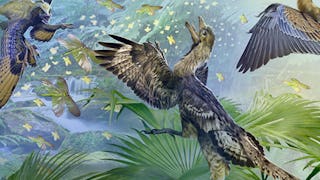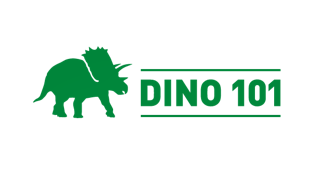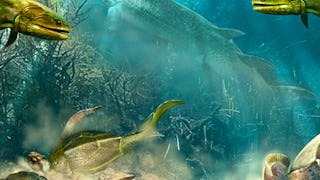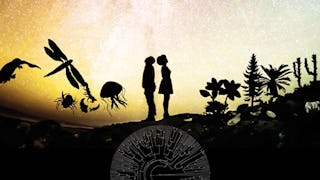Dinosaurs are unique in the history of life. They evolved more than 200 million years ago, inhabited every continent, and are still around today. This course provides an overview of the world of dinosaurs, from the earliest small dinosaurs to titanosaurs and T. rex to modern birds, and investigates some of the most fascinating questions in dinosaur paleontology: How did dinosaurs get so big? What were they like when they were alive? Why did they suddenly go extinct? Drawing on the Museum’s long-standing leadership in the field, including the world's largest collection of vertebrate fossils, renowned paleontologists Mark Norell and Diego Pol, joined by colleagues from around the world, explain how modern discoveries are made. Through videos and essays, this course takes learners into the field, where fossils are discovered and excavated, and then back to the lab where paleontologists use new technologies and methods to infer how these animals lived. Learners will do their own investigations using real specimens to gain first-hand knowledge of how paleontologists continue to make new discoveries about ancient creatures.
您将获得的技能
要了解的详细信息

添加到您的领英档案
6 项作业
了解顶级公司的员工如何掌握热门技能

该课程共有6个模块
We start with a few basic questions: What makes a dinosaur a dinosaur? How have dinosaurs inhabited our planet for hundreds of millions of years? How do we study them? Co-authors Dr. Mark Norell and Dr. Diego Pol kick off the course with three seminal essays. First, Pol provides a brief introduction to dinosaurs and their evolutionary context, from the Triassic period to today. Then Norell explains how he and other paleontologists discover fossil sites, excavate the specimens, and study them back at the American Museum of Natural History. A series of videos show scientists at work in the field and in the lab and provide a brief history of the Museum’s famous T. rex.
涵盖的内容
6个视频3篇阅读材料1个作业
Dr. Diego Pol’s three essays explain how scientists map evolutionary changes through diagrams called phylogenetic trees in order to figure out how species are related to one another and when different traits emerged. He starts with an overview of the dinosaur family tree, highlighting the major groups and the features that distinguish them. Then he explains the basic evolutionary changes that occurred within each group over millions of years. And finally, he tells the exciting story of how he and colleagues discovered one of the largest dinosaurs that ever lived. Videos show how the titanosaur was discovered, prepared, and finally mounted at the American Museum of Natural History. This week's assignment gives learners the opportunity to examine the characteristics of a fossil and construct an evidence-based hypothesis for its phylogeny.
涵盖的内容
3个视频4篇阅读材料1个作业
The three essays this week, written by Dr. Norell with guest author Dr. James Napoli, explain what extinct dinosaurs were like when they were alive: what they looked like, how they maintained their bodies, and how they used their senses. Norell and Napoli explain how these discoveries were made through modern paleontological techniques such as studying living analogues to make inferences about how extinct animals lived. Guest author Dr. Amy Balanoff presents a case study of Citipati osmolskae to illustrate how she and other paleontologists study the fossil skulls of ancient dinosaurs to hypothesize about dinosaur behavior. In this week’s video Norell and Balanoff discuss commonalities between living birds and their extinct ancestors. In this week’s assignment learners will observe trackways, collect data on foot length and stride length, and then make inferences about behavior from data analysis.
涵盖的内容
4个视频4篇阅读材料1个作业
This week, four guest scientists share their research into how dinosaurs moved and reproduced. First, Dr. Matteo Fabbri explains how paleontologists draw on evidence from living birds and reptiles to infer how dinosaurs hatched and cared for their young. Then Dr. Jasmina Weimann takes us on her personal journey of discovery about the color of dinosaur eggshells. In the next essay, Dr. John Hutchinson explains how he examines fossil bones and trackways, and then uses computer models to hypothesize how dinosaurs walked and ran. And in the final essay, Dr. Emily Rayfield explains how she uses computational methods that apply physical principles to test and deduce the feeding behavior of non-avian dinosaurs. Videos help learners visualize what dinosaurs looked like and how they grew. In this week’s assignment, learners will use images of authentic growth rings to age dinosaurs and construct growth curves.
涵盖的内容
3个视频4篇阅读材料1个作业
The guest author this week is Dr. Greg Erikson, a paleontologist who studies population biology, the field that addresses questions such as how long dinosaurs lived and when they reached reproductive age. The first essay picks up on the assignment from the previous week, explaining how scientists analyze patterns in bone growth to infer the age of a dinosaur when it died. The second essay explores how scientists use growth curves to explore how dinosaurs got so big, or so small. The third essay explains how we can obtain a clearer picture of how these animals lived by examining demographic data (i.e., how many dinosaurs lived together, how many were sexually mature, at what age they died). A video features Dr. Aki Watanabe discussing the lifespan and growth pattern of the famous T. rex, from fluffy chick to tyrant king.
涵盖的内容
3个视频3篇阅读材料1个作业
In this final week of the course, learners will pivot from investigating how non-avian dinosaurs lived to exploring how they went extinct. In the first essay, Pol compares theories about what caused the great dinosaur extinction 66 million years ago. In the second essay, he digs deeper into that extinction event to address questions such as: Why did some animal species survive when so many others did not? In the final essay of the course, Dr. Pol answers the question: How do we know what we know about the K-T extinction, using the Tanis site in North Dakota as a case study to answer that question and more.
涵盖的内容
2个视频3篇阅读材料1个作业
位教师

从 Research Methods 浏览更多内容
 状态:预览
状态:预览University of Alberta
 状态:免费
状态:免费University of Alberta
 状态:预览
状态:预览University of Alberta
 状态:免费
状态:免费University of Cape Town
人们为什么选择 Coursera 来帮助自己实现职业发展




学生评论
65 条评论
- 5 stars
84.61%
- 4 stars
15.38%
- 3 stars
0%
- 2 stars
0%
- 1 star
0%
显示 3/65 个
已于 Jul 29, 2025审阅
adequate level of actual science to be educational
已于 Jan 10, 2025审阅
Great course and very up-to-date. There is a lot of material on birds (which is great) and thus makes this course also very interesting to people interested in birds and their evolution through time.
已于 Jun 9, 2025审阅
really good subjects and explains content very well
常见问题
To access the course materials, assignments and to earn a Certificate, you will need to purchase the Certificate experience when you enroll in a course. You can try a Free Trial instead, or apply for Financial Aid. The course may offer 'Full Course, No Certificate' instead. This option lets you see all course materials, submit required assessments, and get a final grade. This also means that you will not be able to purchase a Certificate experience.
When you purchase a Certificate you get access to all course materials, including graded assignments. Upon completing the course, your electronic Certificate will be added to your Accomplishments page - from there, you can print your Certificate or add it to your LinkedIn profile.
Yes. In select learning programs, you can apply for financial aid or a scholarship if you can’t afford the enrollment fee. If fin aid or scholarship is available for your learning program selection, you’ll find a link to apply on the description page.
更多问题
提供助学金,





